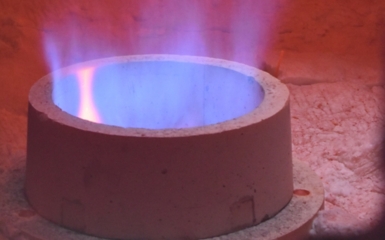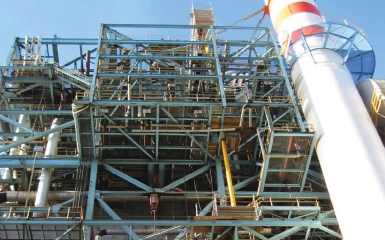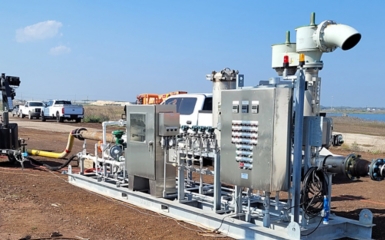We assisted a major oil refinery in reducing NOx emissions on three 550,000 lb/hr tangentially fired boilers while considering retrofit cost, timeline, and equipment compatibility. The retrofit successfully achieved target emissions, received an award for exceptional performance, and showcased our expertise in optimizing industrial combustion systems.

Reducing NOx Emissions and Retrofit Costs on Tangentially Fired Boilers
You May Also Be Interested In

Delivering the SOLEX™ Burner Combustion System and Lowering Emissions
John Zink successfully delivered the SOLEX burner combustion system, achieving less than 5 ppm NOx emissions and nearly zero CO emissions across a broad range of operating conditions. The SOLEX™ combustion system is John Zink's next-generation NOx technology industrial burner for process heaters in general refining service, designed with two combustion zones to achieve single-digit NOx emissions without traditional post-combustion treatment methods, such as selective catalytic reduction (SCR).

Delivering the SOLEX™ Burner Combustion System and Lowering Emissions
John Zink successfully delivered the SOLEX burner combustion system, achieving less than 5 ppm NOx emissions and nearly zero CO emissions across a broad range of operating conditions. The SOLEX™ combustion system is John Zink's next-generation NOx technology industrial burner for process heaters in general refining service, designed with two combustion zones to achieve single-digit NOx emissions without traditional post-combustion treatment methods, such as selective catalytic reduction (SCR).

Converting Oil Fired, T-Fired Utility Furnaces to Fire Gas and Oil
John Zink executed a successful conversion for Puerto Rico Electric Power Authority (PREPA), transforming two 410 MWe tangentially fired boilers at the South Coast Generating Station. The conversion involved equipping unit #5 and #6 boilers with advanced gas burners, safety valves, and pressure-regulating skids. This allowed PREPA to flexibly switch between natural gas and fuel oil firing, achieving fuel cost reduction and adherence to regulations. The conversion preserved existing oil-firing capabilities and optimized boiler performance, resulting in substantial operational benefits for PREPA.

Converting Oil Fired, T-Fired Utility Furnaces to Fire Gas and Oil
John Zink executed a successful conversion for Puerto Rico Electric Power Authority (PREPA), transforming two 410 MWe tangentially fired boilers at the South Coast Generating Station. The conversion involved equipping unit #5 and #6 boilers with advanced gas burners, safety valves, and pressure-regulating skids. This allowed PREPA to flexibly switch between natural gas and fuel oil firing, achieving fuel cost reduction and adherence to regulations. The conversion preserved existing oil-firing capabilities and optimized boiler performance, resulting in substantial operational benefits for PREPA.

Meeting USCG Standards with John Zink’s Portable Marine Vapor Control Equipment
In the highly regulated maritime industry, meeting stringent safety and environmental standards is crucial for operations. Recently, a customer in the Gulf Coast area faced a significant challenge: they needed portable marine vapor control equipment that met U.S. Coast Guard (USCG) requirements. With no existing infrastructure in place for vapor control, they turned to John Zink for a reliable and efficient rental solution.

Meeting USCG Standards with John Zink’s Portable Marine Vapor Control Equipment
In the highly regulated maritime industry, meeting stringent safety and environmental standards is crucial for operations. Recently, a customer in the Gulf Coast area faced a significant challenge: they needed portable marine vapor control equipment that met U.S. Coast Guard (USCG) requirements. With no existing infrastructure in place for vapor control, they turned to John Zink for a reliable and efficient rental solution.
Burner Solutions for Maximum Efficiency
Our proven combustion solutions, including our innovative burner solutions, play a vital role in the refining industry. Our long partnership with the industry has earned us a reputation as a dedicated problem-solver, answering the needs of our customers with advanced burner technologies that maximize production and protect the environment.